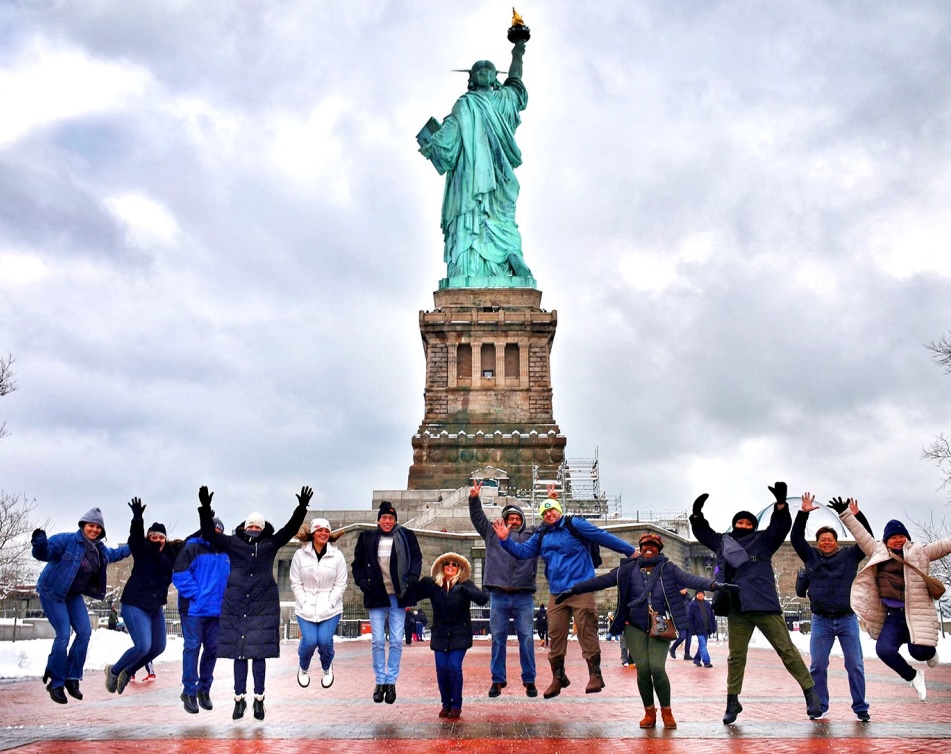Ellis Island is an important piece of not just United States history but world history as well.
The island that sits between New York and New Jersey — not too far from the Statue of Liberty — was a portal to American freedom in the late 1800s and early 1900s. This island provided a new beginning for immigrants who crossed the ocean, and still today, it acts as a tourist destination for visitors from all over the world. Ellis Island has a rich history, though, and has quite a lot of quirky or interesting facts, many of which you probably don’t know.
Planning to visit NYC? Check out these fascinating Ellis Island facts first to beef up your knowledge.
1. It had a life before it was an immigration station
Ellis Island existed long before it became the Ellis Island we know today as a portal for immigrants coming to the United States. In the early 1800s, it was a place where pirates and criminals were condemned to death.
New Yorkers came to know the island as “Gibbet Island” after the gibbets — or posts — where the criminals were hanged. It was then used by the Navy before it became a stopping point for immigrants.
2. Ellis Island processed over 12 million immigrants
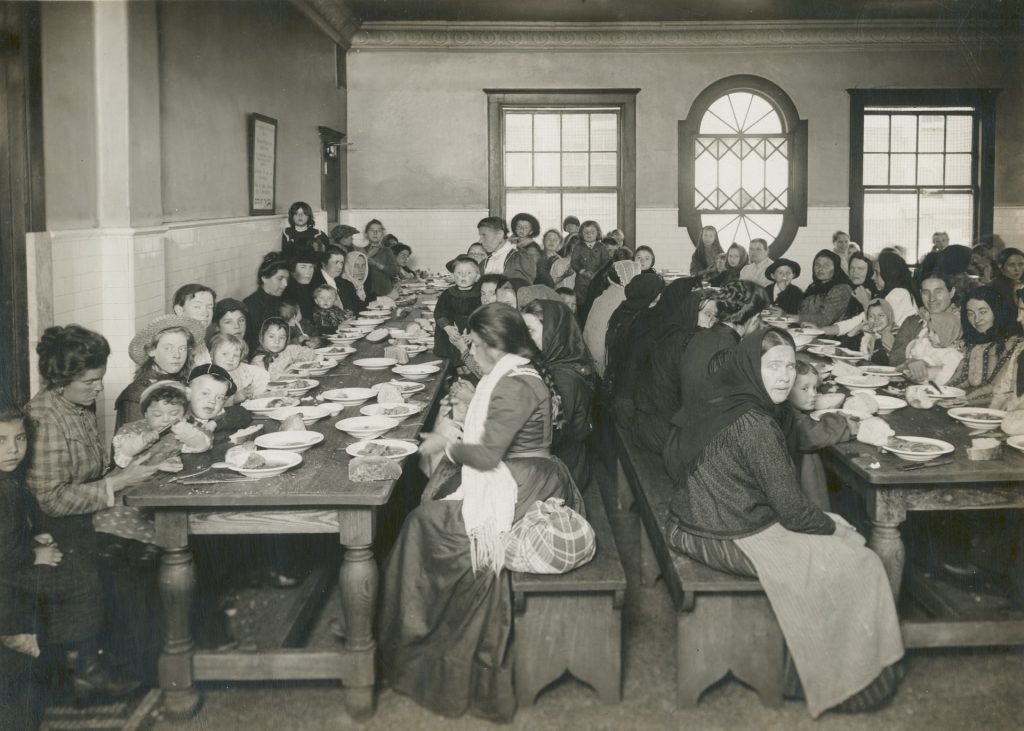
From its opening until 1954, when Ellis Island shut down operations, it processed about 12 million immigrants from steamer ships that came to New York City. It first opened and started welcoming people to the United States in 1892.
3. The first immigrant to come through Ellis Island was a child
The first immigrant to step foot through Ellis Island wasn’t an adult. She was technically a minor, a 17-year-old Irish girl named Annie Moore. She came to the United States with her two younger brothers, who were 11 and 7. Her parents and two older siblings had already traveled to the United States, and on New Year’s Day in 1892, the whole family was reunited in New York City.
4. Ellis Island has grown more than 800% in size
Originally, Ellis Island was 3.3 acres in size. Now, it’s about 27.5 acres in size. No, that’s not some weird form of reverse erosion. The island was intentionally expanded with fill dirt to accommodate the amount of people coming through and to house the buildings.
5. Some immigrants were denied entry
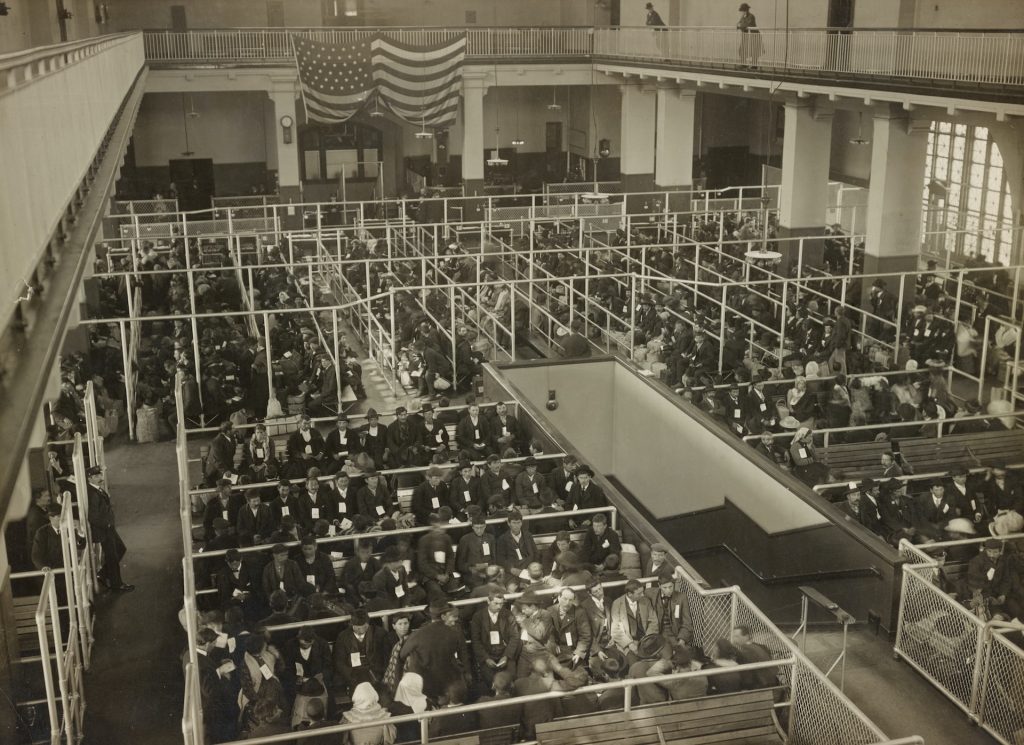
Those wishing to enter the United States had to undergo an evaluation at Ellis Island. We cover some of this in our blog about what life on Ellis Island was like for immigrants.
The evaluation generally consisted of a brief inspection to ensure they appeared healthy and able to enter the workforce. If someone showed any visible signs of declining physical or mental health, they were flagged and taken for further evaluation. Not many people were ultimately denied entry, though — only about 2%.
6. Fiorello LaGuardia worked at Ellis Island before becoming mayor
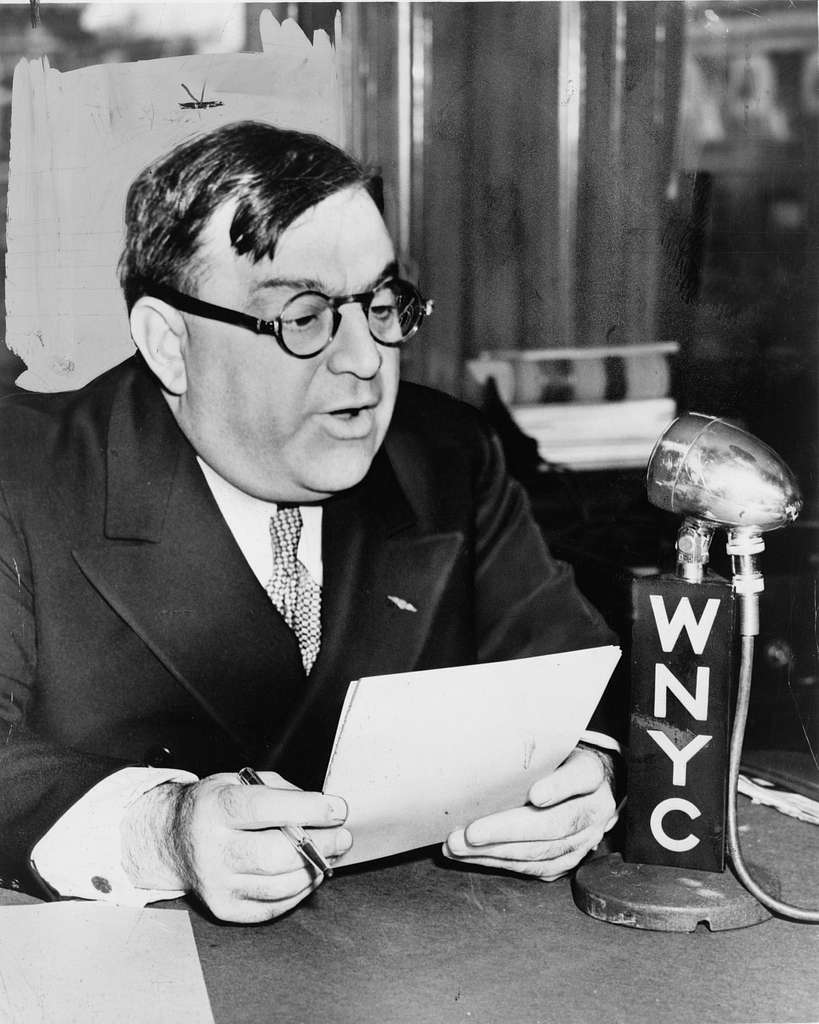
You may not know Fiorella LaGuardia, but you probably heard of the NYC airport named after him. LaGuardia was a well-known New York mayor who worked at Ellis Island as a translator before he went on to become one of the city’s most famous officials.
He worked at Ellis Island from 1907 to 1910 and was fluent in Italian, Croatian, and Yiddish.
7. Ellis Island was named for Samuel Ellis
Ellis Island is named after a New Yorker called Samuel Ellis. He owned the island in the 1770s, but it was eventually purchased by New York. Shortly after, it was purchased by the federal government, which didn’t bother to change the name, although Immigration Isle would have been a pretty good name.
8. A fire destroyed everything in 1897
Shortly after Ellis Island started accepting immigrants, the whole place caught fire. The buildings and records were destroyed, but the main building was rebuilt in 1900 in fireproof materials. It reopened to immigrants once construction was complete.
9. Ellis Island straddles New Jersey and New York
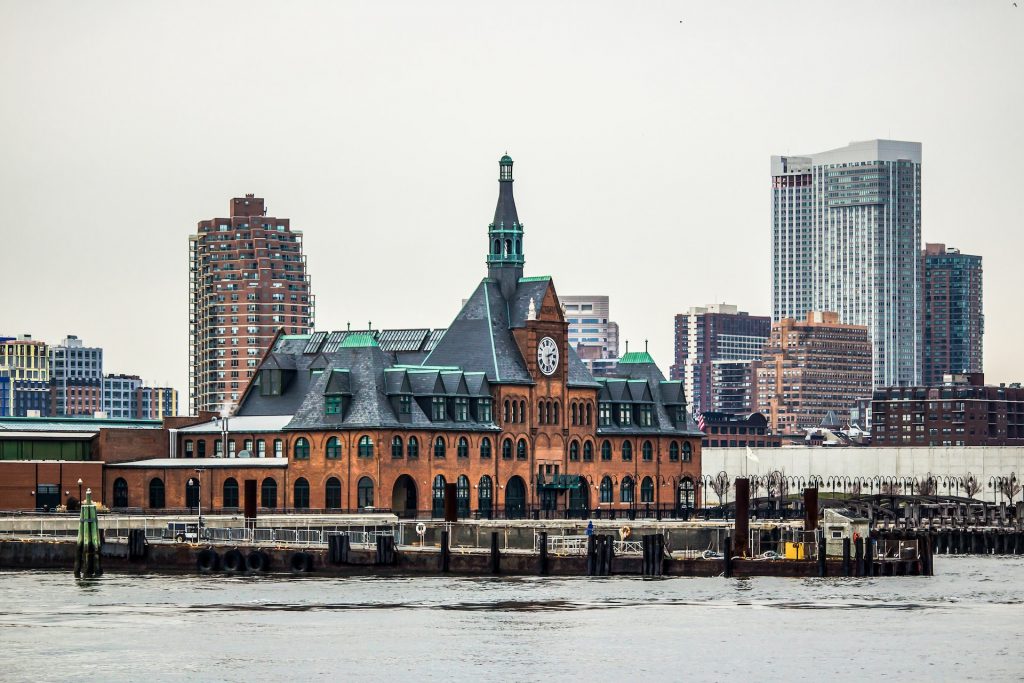
Though Ellis Island is viewed as a piece of New York history, the waters it sits in actually belong to New Jersey.
An 1834 agreement stated the island belonged to New York. However, in 1998, a new agreement stated that while the original 3.3 acres of land would belong to New York, the additional 24.2 acres of land would belong to New Jersey.
In fact, Ellis Island is quite close to New Jersey. You can see the beautiful 1880s Central Railroad of New Jersey Terminal, pictured above, from the island, a mere half mile away. You can also catch the ferry to Liberty Island and Ellis Island from this spot in New Jersey.
10. The Statue of Liberty Ferry Will Take You to Ellis Island
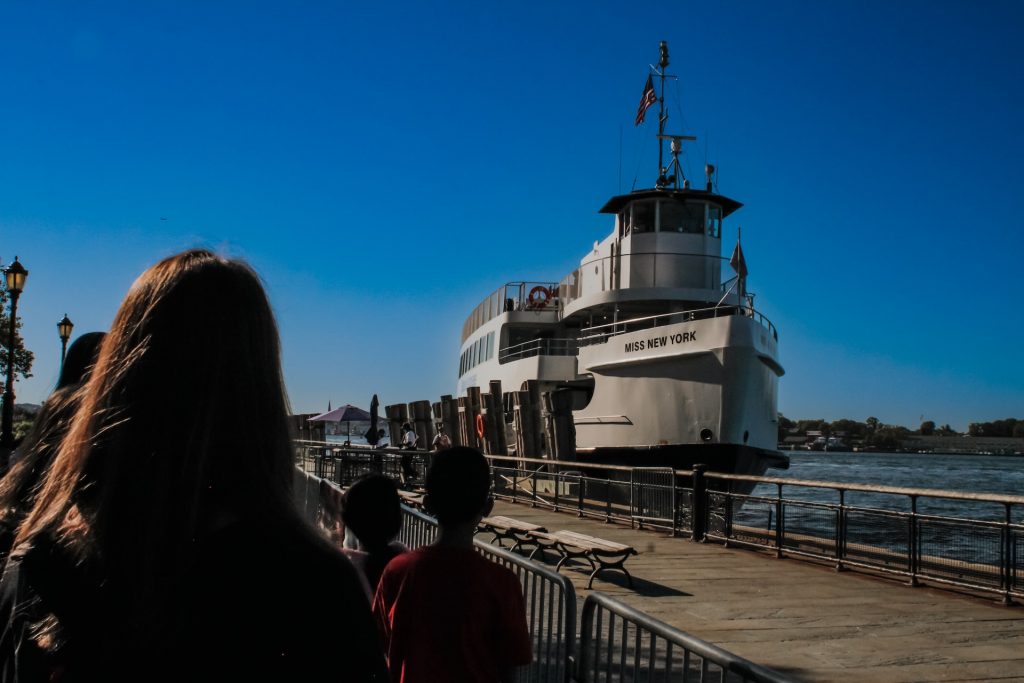
If you’re looking to head out to Ellis Island, you can actually do it in one fell swoop with your trip to the Statue of Liberty. Your ticket to Liberty Island will also get you to Ellis Island at no extra cost.
Our award-winning tour (No. 3 on Tripadvisor globally) includes a guided visit to both Liberty and Ellis islands, but if you opt for the express visit to just the Statue of Liberty, you can still stop at Ellis Island for a self-guided tour.
11. You can look up your ancestors at Ellis Island
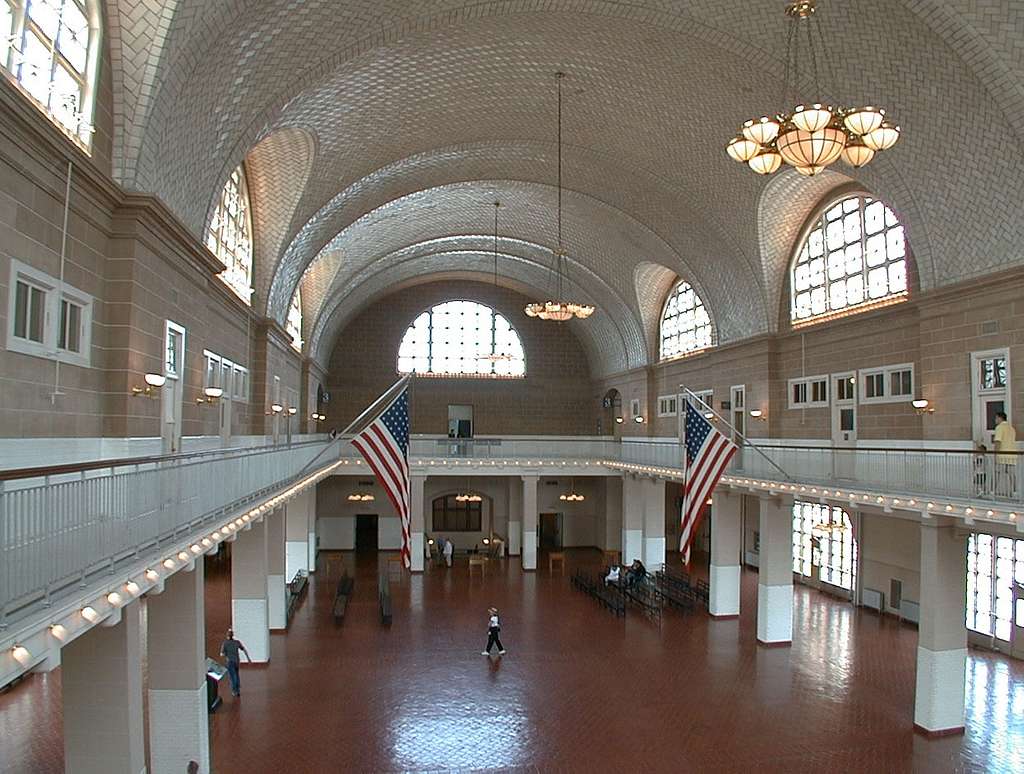
If your ancestors came through Ellis Island, chances are you can find a record of it during your visit there. Sure, most people might know this fact, but do you know how to do it?
We’re here to help. If you go into the Ellis Island Immigration Museum, you can find the registry of people who came through the island on their journey to the United States. The provided computers contain records for ships that came to the Port of New York between 1892 and 1924.
12. Ellis Island was a detention center during WWI and WWII
During the world wars, the United States government detained those they viewed as a threat to the country. Because Ellis Island wasn’t being used as much for immigration anymore, the government used it to house suspected enemies and later Nazi sympathizers.
13. Ellis Island was closed in 1954
Ellis Island was shut down in 1954 to save money for the government.
In the years before its closure, it was used more as a detention facility than an immigration center. While the island had been used in its early years as a place for inspection before granting entry into the United States for immigrants, those inspections eventually began taking place before people even came to the U.S.
Because Ellis Island wasn’t needed as much for immigration, it fell out of use so that by the 1950s, it was hardly used at all. Hence, it closed.
14. Ellis Island as we know it today opened in 1990
Fortunately, that’s not the end of the story.
After it was closed, Ellis Island sat vacant for years. The government really didn’t know what to do with the island. It opened in 1976 to the public, but it wasn’t until years later that it was decided the island would be turned into a tourist attraction with a museum. The Ellis Island National Museum of Immigration opened in 1990.
15. The island sees about 3 million visitors per year
Plenty of people make a stop at Ellis Island these days, whether it’s to see where their ancestors once walked or to experience a piece of American history.
Roughly 3 million people come to Ellis Island each year to visit. Make your own visit to Ellis Island and the Statue of Liberty with a guided tour that will help you explore all of its layered history.
How to visit Ellis Island
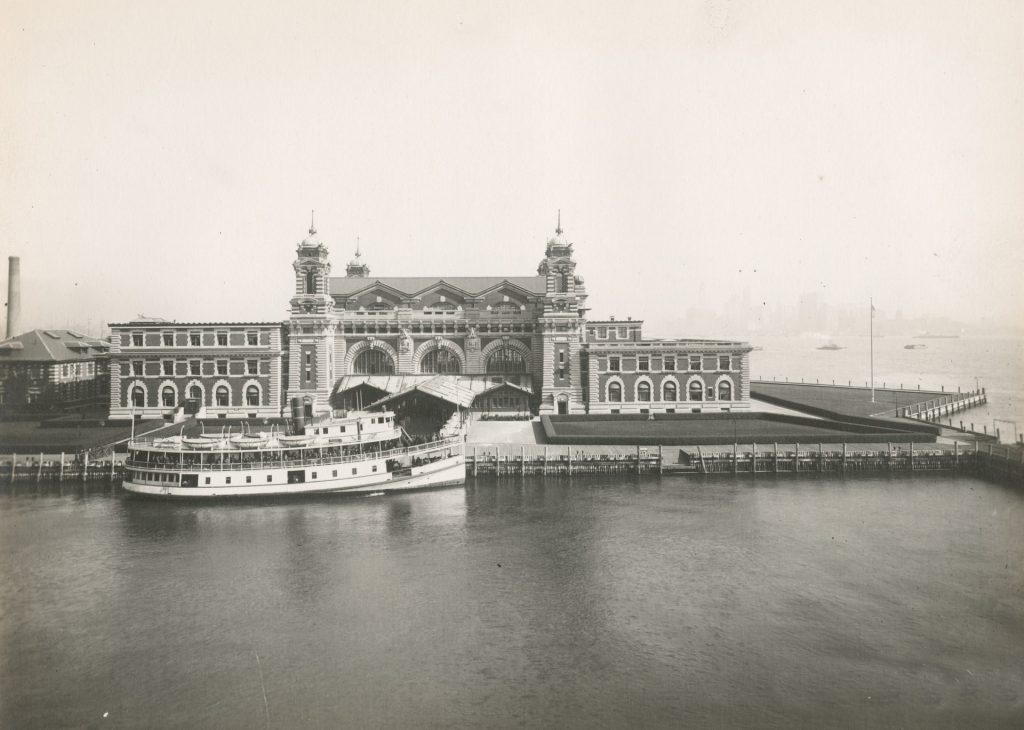
Want to add Ellis Island to your NYC visit? We wrote a first-timer’s guide on how to add Ellis Island to your Statue of Liberty trip. It has everything you need to help you prepare for your visit plus tips from our local guide.
We can’t wait to welcome you to NYC!
